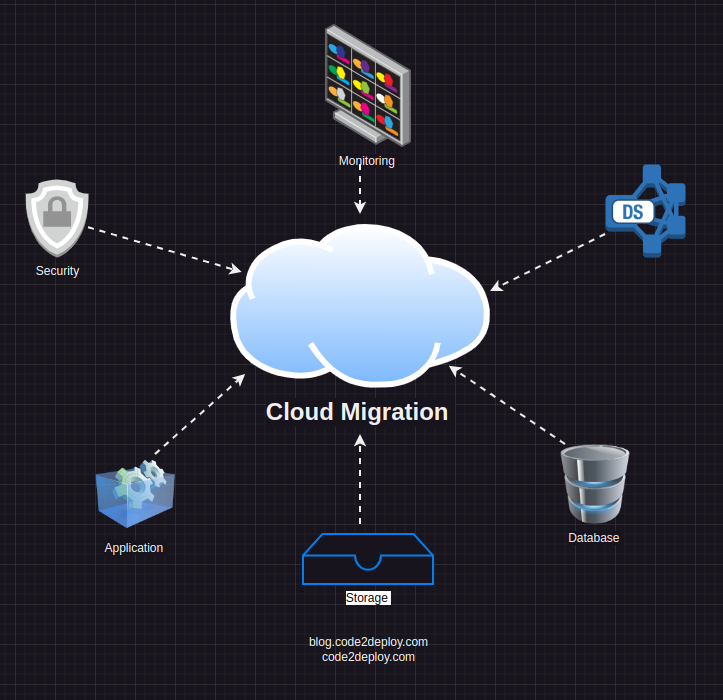Introduction:
In today’s digital age, businesses are increasingly turning to cloud computing to streamline operations, enhance flexibility, and boost scalability. Cloud computing offers a variety of deployment models tailored to meet the diverse needs of organizations worldwide. Among these, public cloud, private cloud, and hybrid cloud stand out as prominent options, each offering unique advantages and use cases. Let’s delve into the intricacies of these cloud solutions and understand how they can empower businesses to thrive in the modern landscape.
Public Cloud: Unleashing Scalability and Efficiency
In the realm of public cloud computing, third-party service providers such as AWS, Google Cloud Platform (GCP), Microsoft Azure, Oracle Cloud, and Alibaba Cloud play a pivotal role. Public cloud services enable organizations to access computing resources, including servers, storage, databases, and networking, over the Internet on a pay-as-you-go basis. By relinquishing the burden of managing physical infrastructure, businesses can focus on innovation and growth.
Key Characteristics:
- Resource Management: Public cloud providers handle the maintenance and management of underlying infrastructure, ensuring availability, reliability, and security through robust service-level agreements.
- Cost Efficiency: Shared infrastructure and pay-as-you-go pricing models make public cloud services cost-effective, particularly for startups and small to medium-sized enterprises.
- Scalability: Automated scaling capabilities enable seamless adjustment of computing resources based on fluctuating demand, ensuring optimal performance and efficiency.
Example Use Case: A software startup leverages AWS’s public cloud infrastructure to rapidly deploy and scale its web application, catering to varying user loads without incurring substantial upfront costs.
Private Cloud: Empowering Security and Control
Private cloud infrastructure offers organizations a dedicated computing environment tailored to their specific needs, providing unparalleled security, control, and customization capabilities. Whether deployed on-premises or hosted by a third-party provider, private clouds empower businesses to safeguard sensitive data, meet compliance requirements, and optimize performance.
Key Characteristics:
- Security: Private cloud environments offer isolation from other tenants, reducing the risk of unauthorized access and data breaches. Enhanced security controls and compliance measures ensure the protection of sensitive information.
- Customization: Organizations have the freedom to tailor their private cloud infrastructure to specific workload requirements, selecting hardware configurations, software stack, and security policies that align with their business objectives.
- Regulatory Compliance: Private clouds are well-suited for industries with stringent regulatory requirements, such as healthcare, finance, and government, enabling organizations to maintain compliance while leveraging cloud benefits.
Example Use Case: A healthcare provider adopts Azure Stack to build a private cloud environment that hosts electronic health records (EHRs) and patient data, ensuring compliance with HIPAA regulations and safeguarding sensitive medical information.
Hybrid Cloud: Bridging On-Premises and Cloud Environments
Hybrid cloud architecture seamlessly integrates an organization’s on-premises infrastructure with public and private cloud environments. This flexible approach enables businesses to leverage the benefits of both worlds, optimizing resource utilization, enhancing agility, and addressing specific workload requirements.
Key Characteristics:
- Integration: Hybrid cloud solutions facilitate seamless data and application migration between on-premises data centers, public cloud platforms, and private cloud environments.
- Flexibility: Organizations can dynamically allocate workloads across different cloud environments based on performance, compliance, and cost considerations, ensuring optimal resource utilization.
- Centralized Management: A unified management framework enables administrators to orchestrate and monitor hybrid cloud resources from a single interface, simplifying operations and enhancing governance.
Example Use Case: A financial institution adopts a hybrid cloud strategy to balance data sovereignty requirements with the scalability and agility offered by public cloud services, seamlessly integrating its core banking systems with cloud-based analytics platforms.
Private Cloud Solutions:
Private cloud solutions such as Red Hat Virtualization, OpenStack, VMware, Proxmox, and oVirt offer organizations a robust foundation for building secure, scalable, and efficient cloud infrastructures. By leveraging these platforms, businesses can unlock the benefits of cloud computing while maintaining control over their IT resources and ensuring compliance with regulatory requirements.
Conclusion:
In the dynamic landscape of cloud computing, organizations are presented with a myriad of options to drive innovation, agility, and competitiveness. Whether embracing the scalability of the public cloud, the control of the private cloud, or the versatility of the hybrid cloud, businesses can harness the power of cloud computing to transform their operations and unlock new opportunities for growth. By understanding the nuances of each cloud deployment model and aligning them with their strategic objectives, enterprises can navigate the cloudscape with confidence and resilience.



